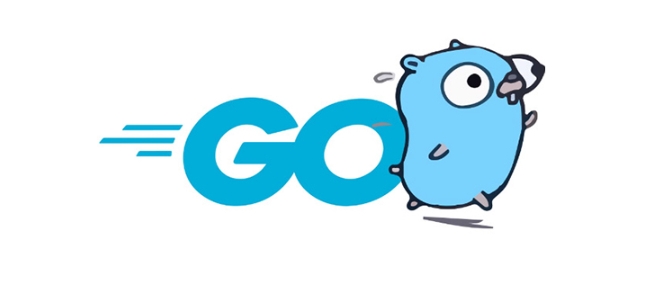Building High-Performance Microservices with Go
Jul 25, 2025 am 04:32 AMUse lightweight routers like Chi for efficient HTTP handling with built-in middleware and context support. 2. Leverage goroutines and channels for concurrency, always managing them with context.Context to prevent leaks. 3. Optimize service communication by using gRPC with Protocol Buffers for low-latency, high-throughput inter-service calls, or reuse HTTP clients with connection pooling and timeouts when using HTTP. 4. Implement effective observability with structured logging (Zap/Slog), distributed tracing (OpenTelemetry), and Prometheus metrics to monitor performance and detect issues. 5. Design for resilience with timeouts, exponential backoff with jitter for retries, circuit breakers (e.g., sony/gobreaker), and stateless services to enable horizontal scaling. Building high-performance microservices in Go requires combining efficient tools, smart concurrency, resilient design, and strong observability to achieve scalable, maintainable systems.

Go has become one of the top choices for building high-performance microservices, thanks to its simplicity, concurrency model, and fast execution. If you're building scalable backend systems, Go offers the right balance of performance and developer productivity. Here’s how to build high-performance microservices effectively in Go.

1. Use Lightweight Routers and Efficient HTTP Handling
When building microservices, every millisecond counts. Avoid heavy frameworks and opt for lightweight, high-performance routers.
Recommendation: Use net/http with a fast router like Gorilla Mux or better yet, Chi, which is designed for modular and composable HTTP services.

r := chi.NewRouter()
r.Get("/users/{id}", getUserHandler)
r.Post("/users", createUserHandler)
http.ListenAndServe(":8080", r)Why Chi?
- Built-in support for middleware (logging, authentication, etc.)
- Lightweight and fast
- Supports context-based request handling (important for timeouts and tracing)
Avoid overusing full-featured frameworks like Gin if you don’t need their extra features—sometimes plain net/http with good design is enough.

2. Leverage Go’s Native Concurrency with Goroutines and Channels
Microservices often deal with concurrent requests, I/O operations, or background tasks. Go’s goroutines make it easy to handle thousands of concurrent connections with minimal overhead.
Best practices:
- Use goroutines for non-blocking operations (e.g., sending notifications, logging, or async processing)
- Always manage goroutines with
context.Contextto avoid leaks - Use channels or
sync.WaitGroupfor coordination when needed
func processOrder(ctx context.Context, order Order) error {
ctx, cancel := context.WithTimeout(ctx, 5*time.Second)
defer cancel()
var wg sync.WaitGroup
var mu sync.Mutex
errors := make([]error, 0)
wg.Add(2)
go func() {
defer wg.Done()
if err := chargePayment(ctx, order); err != nil {
mu.Lock()
errors = append(errors, err)
mu.Unlock()
}
}()
go func() {
defer wg.Done()
if err := scheduleDelivery(ctx, order); err != nil {
mu.Lock()
errors = append(errors, err)
mu.Unlock()
}
}()
wg.Wait()
if len(errors) > 0 {
return fmt.Errorf("failed with %d errors", len(errors))
}
return nil
}This pattern allows parallel execution while keeping resource usage low.
3. Optimize Service Communication
In a microservices architecture, services talk to each other—often over HTTP or gRPC.
For high performance:
- Use gRPC with Protocol Buffers instead of JSON over HTTP when latency and throughput matter
- gRPC is faster, uses less bandwidth, and supports bidirectional streaming
- Generate strongly-typed clients and servers to reduce bugs
Example .proto:
service UserService {
rpc GetUser (UserRequest) returns (UserResponse);
}
message UserRequest {
int64 id = 1;
}
message UserResponse {
string name = 1;
string email = 2;
}Use tools like Buf and protoc to generate Go code.
When you must use HTTP:
- Reuse HTTP clients with connection pooling
- Set proper timeouts
client := &http.Client{
Timeout: 10 * time.Second,
Transport: &http.Transport{
MaxIdleConns: 100,
MaxConnsPerHost: 50,
MaxIdleConnsPerHost: 50,
IdleConnTimeout: 30 * time.Second,
},
}4. Monitor, Trace, and Log Effectively
High-performance systems are useless if you can’t debug them.
Essential observability tools:
- Logging: Use structured logging with Zap or Slog (Go 1.21 )
- Tracing: Integrate OpenTelemetry for distributed tracing across services
- Metrics: Expose Prometheus endpoints for latency, request rate, error rate
Example with Prometheus:
http.Handle("/metrics", promhttp.Handler())
go http.ListenAndServe(":9090", nil)Add middleware to track request duration:
func metricsMiddleware(next http.Handler) http.Handler {
return http.HandlerFunc(func(w http.ResponseWriter, r *http.Request) {
start := time.Now()
next.ServeHTTP(w, r)
latency.Observe(time.Since(start).Seconds()) // Prometheus histogram
})
}This helps identify bottlenecks before they become outages.
5. Design for Resilience and Scalability
Even the fastest service fails without resilience.
Key patterns:
- Timeouts: Always set timeouts on outgoing calls
- Retries: Use exponential backoff with jitter for transient failures
- Circuit Breakers: Prevent cascading failures using libraries like sony/gobreaker
Example with retry logic:
var backoff = []time.Duration{
100 * time.Millisecond,
200 * time.Millisecond,
500 * time.Millisecond,
}
for i, d := range backoff {
time.Sleep(d)
err := callExternalService()
if err == nil {
break
}
if i == len(backoff)-1 {
return err
}
}Also, design stateless services so they can scale horizontally with Kubernetes or similar orchestration.
Final Thoughts
Building high-performance microservices in Go isn’t just about raw speed—it’s about smart design:
- Use efficient routers and avoid unnecessary abstractions
- Embrace concurrency safely
- Choose the right communication protocol (gRPC > JSON/HTTP when possible)
- Prioritize observability and resilience
Go gives you the tools. The key is applying them with clarity and discipline.
Basically, keep it simple, measure performance, and optimize where it matters.
The above is the detailed content of Building High-Performance Microservices with Go. For more information, please follow other related articles on the PHP Chinese website!

Hot AI Tools

Undress AI Tool
Undress images for free

Undresser.AI Undress
AI-powered app for creating realistic nude photos

AI Clothes Remover
Online AI tool for removing clothes from photos.

Clothoff.io
AI clothes remover

Video Face Swap
Swap faces in any video effortlessly with our completely free AI face swap tool!

Hot Article

Hot Tools

Notepad++7.3.1
Easy-to-use and free code editor

SublimeText3 Chinese version
Chinese version, very easy to use

Zend Studio 13.0.1
Powerful PHP integrated development environment

Dreamweaver CS6
Visual web development tools

SublimeText3 Mac version
God-level code editing software (SublimeText3)
 What is the standard project layout for a Go application?
Aug 02, 2025 pm 02:31 PM
What is the standard project layout for a Go application?
Aug 02, 2025 pm 02:31 PM
The answer is: Go applications do not have a mandatory project layout, but the community generally adopts a standard structure to improve maintainability and scalability. 1.cmd/ stores the program entrance, each subdirectory corresponds to an executable file, such as cmd/myapp/main.go; 2.internal/ stores private code, cannot be imported by external modules, and is used to encapsulate business logic and services; 3.pkg/ stores publicly reusable libraries for importing other projects; 4.api/ optionally stores OpenAPI, Protobuf and other API definition files; 5.config/, scripts/, and web/ store configuration files, scripts and web resources respectively; 6. The root directory contains go.mod and go.sum
 How do you read a file line by line in Go?
Aug 02, 2025 am 05:17 AM
How do you read a file line by line in Go?
Aug 02, 2025 am 05:17 AM
Using bufio.Scanner is the most common and efficient method in Go to read files line by line, and is suitable for handling scenarios such as large files, log parsing or configuration files. 1. Open the file using os.Open and make sure to close the file via deferfile.Close(). 2. Create a scanner instance through bufio.NewScanner. 3. Call scanner.Scan() in the for loop to read line by line until false is returned to indicate that the end of the file is reached or an error occurs. 4. Use scanner.Text() to get the current line content (excluding newline characters). 5. Check scanner.Err() after the loop is over to catch possible read errors. This method has memory effect
 How do you handle routing in a Go web application?
Aug 02, 2025 am 06:49 AM
How do you handle routing in a Go web application?
Aug 02, 2025 am 06:49 AM
Routing in Go applications depends on project complexity. 1. The standard library net/httpServeMux is suitable for simple applications, without external dependencies and is lightweight, but does not support URL parameters and advanced matching; 2. Third-party routers such as Chi provide middleware, path parameters and nested routing, which is suitable for modular design; 3. Gin has excellent performance, built-in JSON processing and rich functions, which is suitable for APIs and microservices. It should be selected based on whether flexibility, performance or functional integration is required. Small projects use standard libraries, medium and large projects recommend Chi or Gin, and finally achieve smooth expansion from simple to complex.
 What are build constraints in Go?
Jul 31, 2025 am 02:53 AM
What are build constraints in Go?
Jul 31, 2025 am 02:53 AM
BuildconstraintsinGoarecommentslike//go:buildthatcontrolfileinclusionduringcompilationbasedonconditionssuchasOS,architecture,orcustomtags.2.TheyareplacedbeforethepackagedeclarationwithablanklineinbetweenandsupportBooleanoperatorslike&&,||,and
 How do you parse command-line flags in Go?
Aug 02, 2025 pm 04:24 PM
How do you parse command-line flags in Go?
Aug 02, 2025 pm 04:24 PM
Go's flag package can easily parse command line parameters. 1. Use flag.Type() to define type flags such as strings, integers, and booleans; 2. You can parse flags to variables through flag.TypeVar() to avoid pointer operations; 3. After calling flag.Parse(), use flag.Args() to obtain subsequent positional parameters; 4. Implementing the flag.Value interface can support custom types to meet most simple CLI requirements. Complex scenarios can be replaced by spf13/cobra library.
 How do you use conditional statements like if-else in Go?
Aug 02, 2025 pm 03:16 PM
How do you use conditional statements like if-else in Go?
Aug 02, 2025 pm 03:16 PM
The if-else statement in Go does not require brackets but must use curly braces. It supports initializing variables in if to limit scope. The conditions can be judged through the elseif chain, which is often used for error checking. The combination of variable declaration and conditions can improve the simplicity and security of the code.
 How do you declare constants in Go?
Aug 02, 2025 pm 04:21 PM
How do you declare constants in Go?
Aug 02, 2025 pm 04:21 PM
In Go, constants are declared using the const keyword, and the value cannot be changed, and can be of no type or type; 1. A single constant declaration such as constPi=3.14159; 2. Multiple constant declarations in the block are such as const(Pi=3.14159; Language="Go"; IsCool=true); 3. Explicit type constants such as constSecondsInMinuteint=60; 4. Use iota to generate enumeration values, such as const(Sunday=iota;Monday;Tuesday) will assign values 0, 1, and 2 in sequence, and iota can be used for expressions such as bit operations; constants must determine the value at compile time,
 How does Go handle concurrency?
Jul 31, 2025 am 09:43 AM
How does Go handle concurrency?
Jul 31, 2025 am 09:43 AM
Gohandlesconcurrencythroughgoroutinesandchannels,enablingsimple,safe,andscalableconcurrentprogramming.1.GoroutinesarelightweightthreadsmanagedbytheGoruntime,startedwiththegokeyword,andrequireminimalresourcesduetosmall,growablestacks.2.Channelsfacilit






